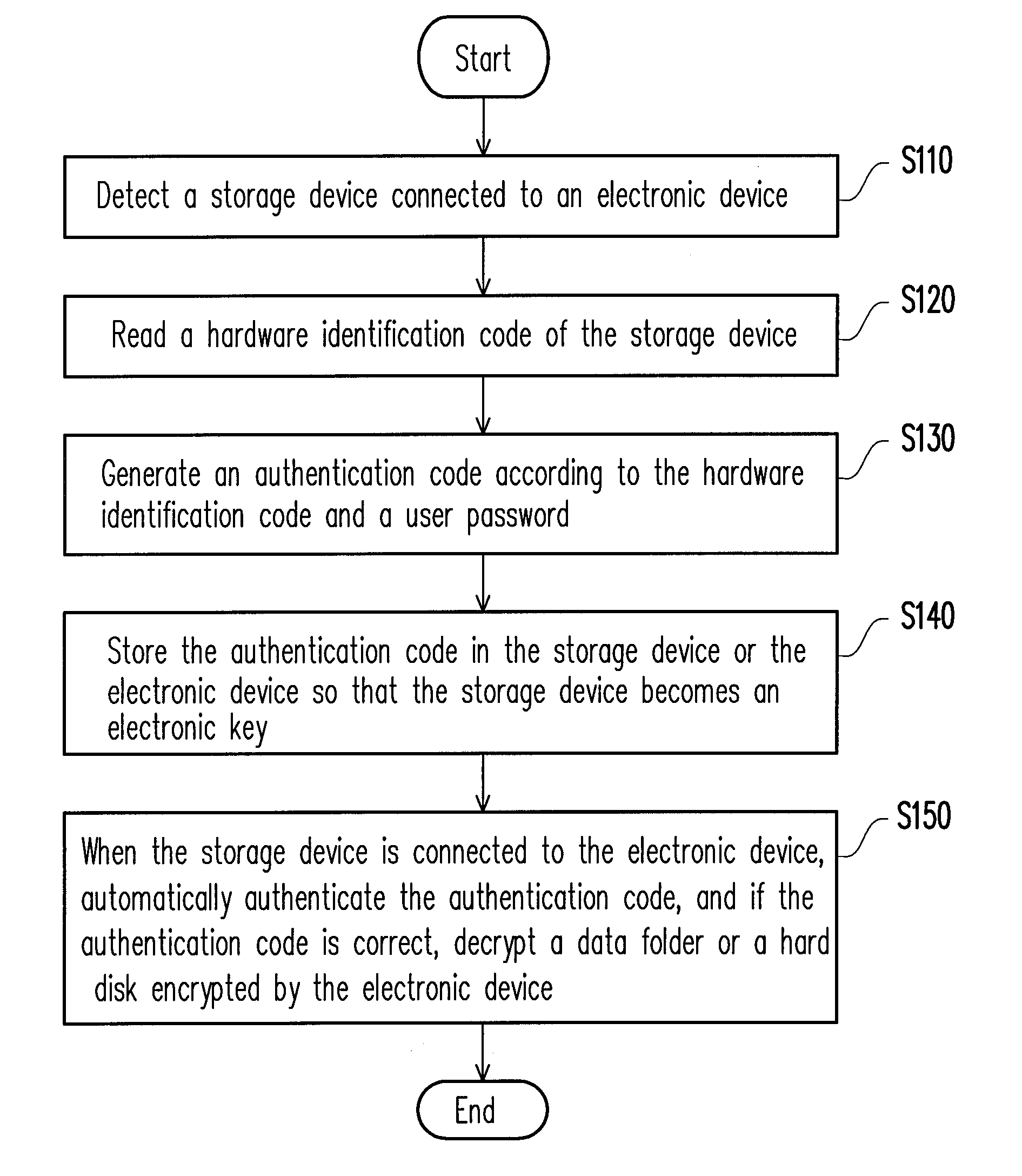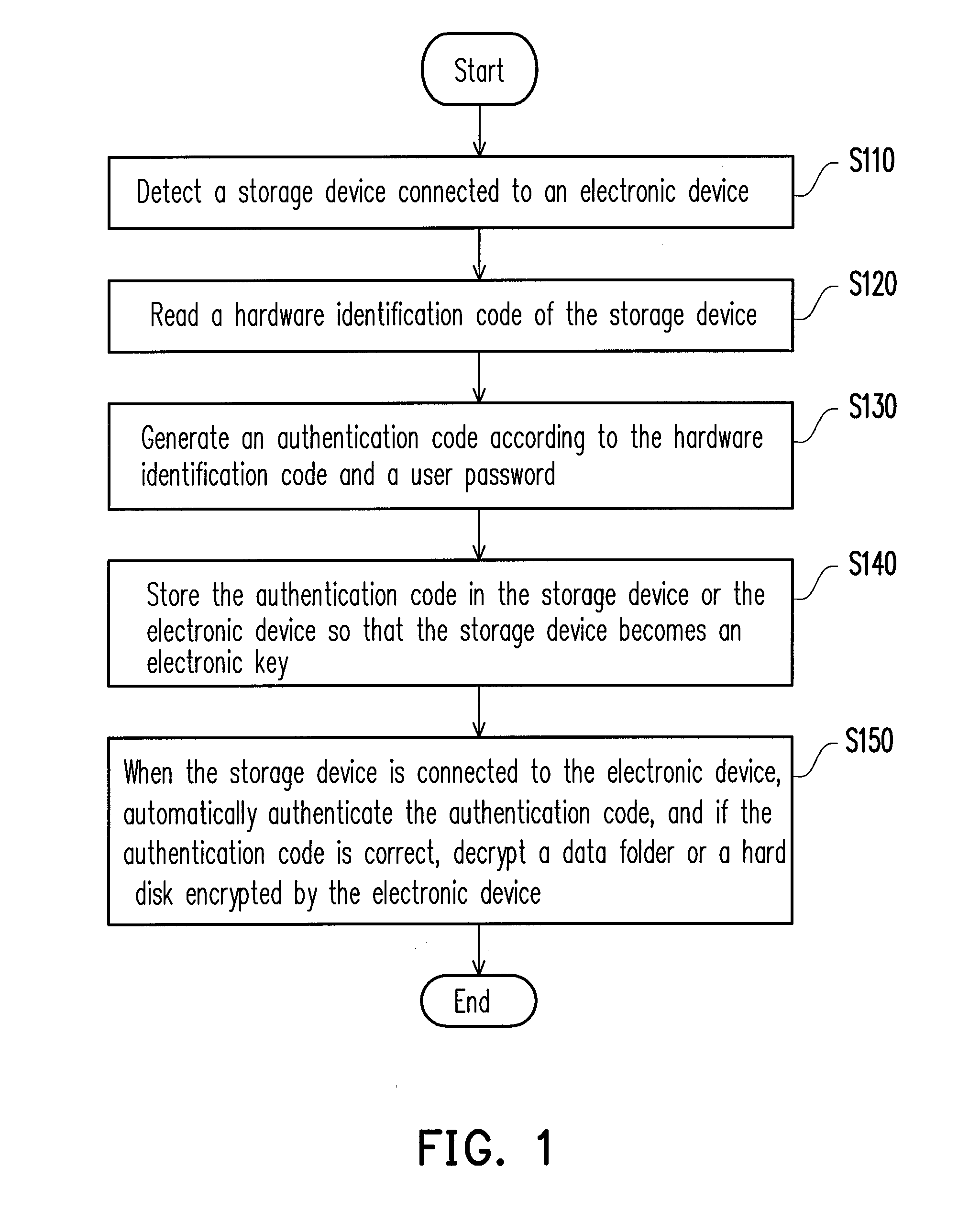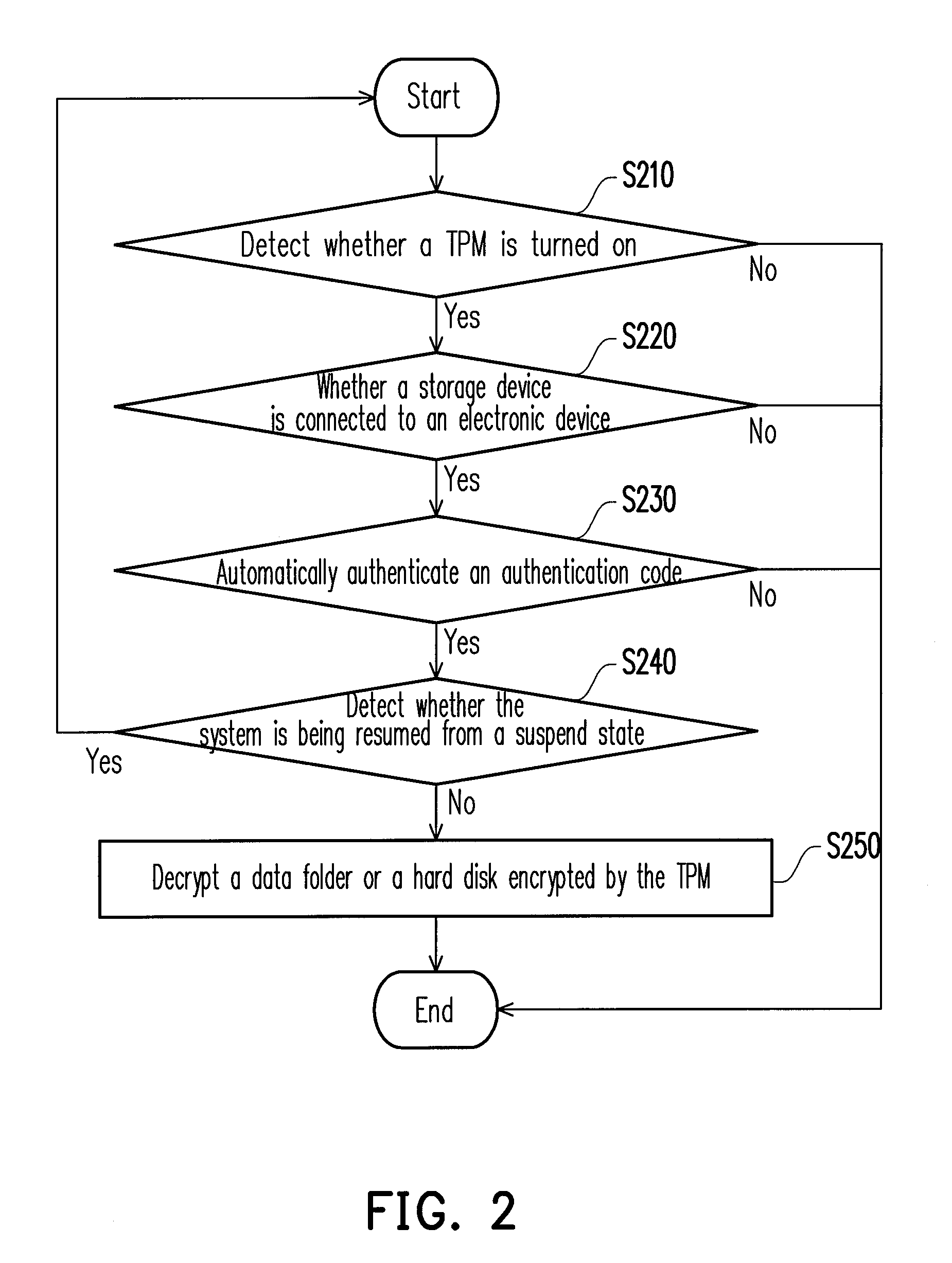Method of password management and authentication suitable for trusted platform module
- Summary
- Abstract
- Description
- Claims
- Application Information
AI Technical Summary
Benefits of technology
Problems solved by technology
Method used
Image
Examples
first embodiment
[0029]A password management and authentication method is provided in the present embodiment, wherein an authentication device selected by a user is set as an electronic key of a trusted platform module (TPM) so that the user can directly open a data folder or a hard disk (HD) encrypted by the TPM by using the authentication device. The user needs not to memorize a TPM password. Instead, the user simply connects the authentication device to an electronic device (for example, a notebook computer, a desktop computer, or a mobile phone), and the electronic device then automatically identifies whether the connected authentication device is correct and opens the data folder or the HD encrypted by the TPM to be used by the user. Thereby, it is made very convenient to the user. In other words, the password management and authentication method provided by the present invention replaces the conventional technique that requires the password to be input manually and allows a system to automatic...
second embodiment
[0034]In foregoing step S150 illustrated in FIG. 1, whether the authentication device is a correct electronic key is determined. If the technique in the present invention is applied to an electronic device with a TPM, the implementation of foregoing step S150 will be described in detail herein. FIG. 2 is a flowchart of a password authentication method according to the second embodiment of the present invention. Referring to FIG. 2, first, whether the TPM is turned on is detected. If the TPM is not turned on, the process is terminated and no password authentication is carried out. If the TPM is turned on, whether an authentication device is connected to the electronic device is further determined (step S220). If the authentication device is connected to the electronic device, an authentication code in the authentication device or the electronic device is automatically authenticated, wherein whether a TPM password (i.e., a user password) and a hardware identification code are correct ...
third embodiment
[0037]In foregoing process for setting up the electronic key, the user may set up the electronic key through a visualized user interface, wherein the settings of the interface is not limited in the present embodiment. Next, a method provided by the present invention for setting up an electronic key will be described with reference to FIG. 3. FIG. 3 is a flowchart illustrating how an electronic key is set up according to the third embodiment of the present invention. First, all connected authentication devices are detected (step S310), and all the authentication devices that can be served as the electronic key are provided to the user to be selected (step S320). Next, an authentication code is generated according to a hardware identification code of the authentication device selected by the user and a TPM password (step S330). After that, the authentication code is encrypted and stored into the authentication device selected by the user or the electronic device (step S340). The authe...
PUM
 Login to View More
Login to View More Abstract
Description
Claims
Application Information
 Login to View More
Login to View More - R&D
- Intellectual Property
- Life Sciences
- Materials
- Tech Scout
- Unparalleled Data Quality
- Higher Quality Content
- 60% Fewer Hallucinations
Browse by: Latest US Patents, China's latest patents, Technical Efficacy Thesaurus, Application Domain, Technology Topic, Popular Technical Reports.
© 2025 PatSnap. All rights reserved.Legal|Privacy policy|Modern Slavery Act Transparency Statement|Sitemap|About US| Contact US: help@patsnap.com



